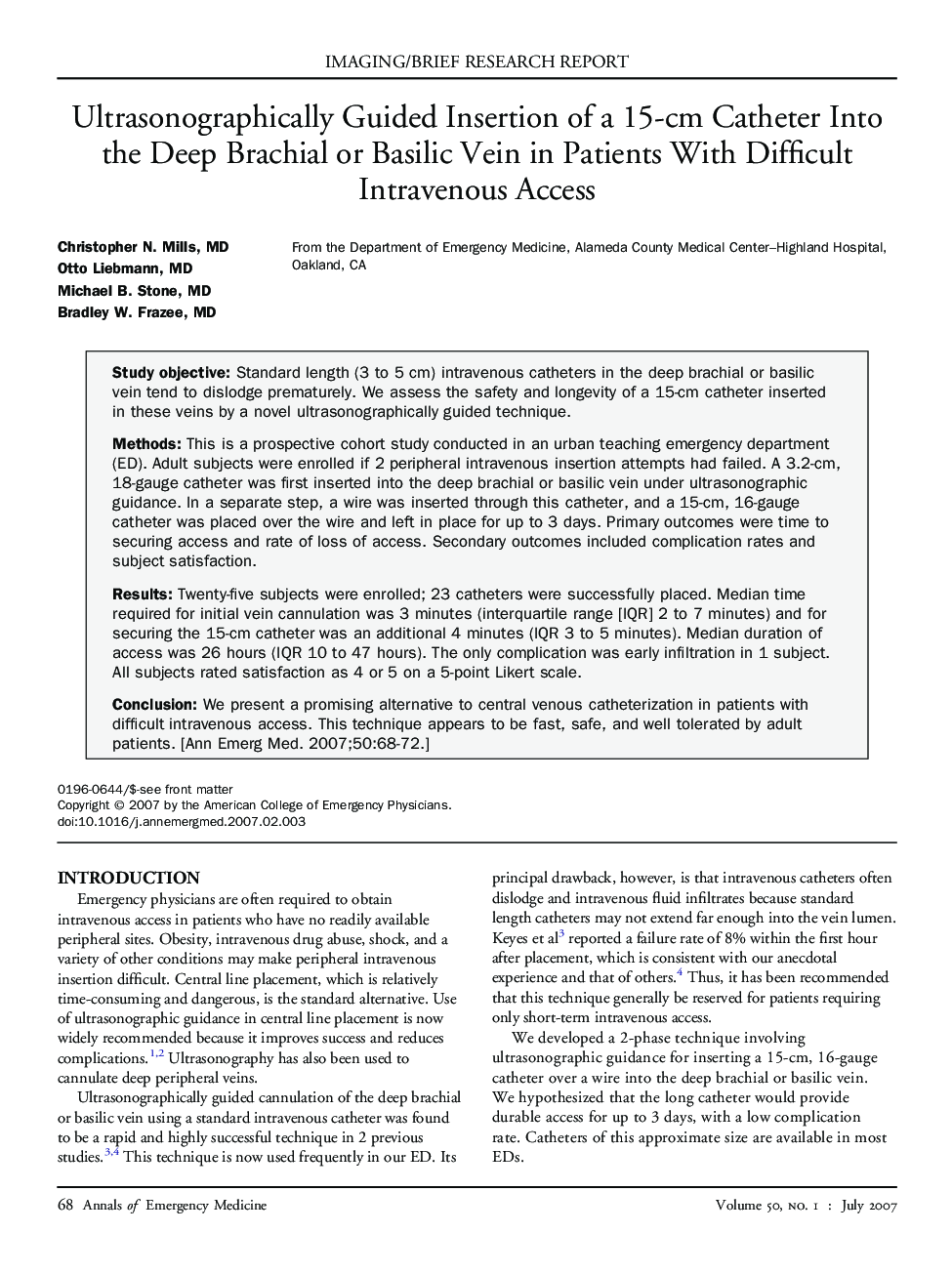| Article ID | Journal | Published Year | Pages | File Type |
|---|---|---|---|---|
| 3233963 | Annals of Emergency Medicine | 2007 | 5 Pages |
Study objectiveStandard length (3 to 5 cm) intravenous catheters in the deep brachial or basilic vein tend to dislodge prematurely. We assess the safety and longevity of a 15-cm catheter inserted in these veins by a novel ultrasonographically guided technique.MethodsThis is a prospective cohort study conducted in an urban teaching emergency department (ED). Adult subjects were enrolled if 2 peripheral intravenous insertion attempts had failed. A 3.2-cm, 18-gauge catheter was first inserted into the deep brachial or basilic vein under ultrasonographic guidance. In a separate step, a wire was inserted through this catheter, and a 15-cm, 16-gauge catheter was placed over the wire and left in place for up to 3 days. Primary outcomes were time to securing access and rate of loss of access. Secondary outcomes included complication rates and subject satisfaction.ResultsTwenty-five subjects were enrolled; 23 catheters were successfully placed. Median time required for initial vein cannulation was 3 minutes (interquartile range [IQR] 2 to 7 minutes) and for securing the 15-cm catheter was an additional 4 minutes (IQR 3 to 5 minutes). Median duration of access was 26 hours (IQR 10 to 47 hours). The only complication was early infiltration in 1 subject. All subjects rated satisfaction as 4 or 5 on a 5-point Likert scale.ConclusionWe present a promising alternative to central venous catheterization in patients with difficult intravenous access. This technique appears to be fast, safe, and well tolerated by adult patients.
